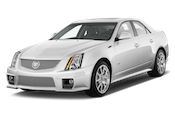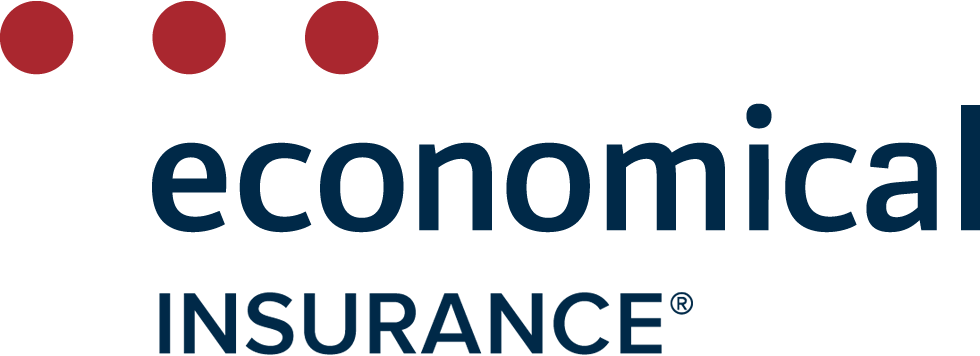
Statutory Accident Benefits Insurance Quotes in Canada
Find the cheapest car insurance quote by comparing quotes from multiple providers in a single search.
Jump straight to...
- What is statutory accident benefit auto insurance?
- What does statutory accident benefits cover?
- What are standard accident benefits in Ontario?
- Upcoming changes to Ontario’s statutory accident benefits coverage
- How to apply and settle your accident benefit claims
- What are accident benefits for a passenger and pedestrian?
- Types of forms that are required for accident benefit car insurance
- Frequently asked questions about statutory accident benefit
How to get a statutory accident benefit car insurance quote
Select your province to begin!

Enter some information about your vehicle and driving history. The more accurate you are, the more accurate your quotes will be!

Voila! You'll be provided with a list of quotes from top insurance companies to choose from.

Connect directly with an insurance professional of your choice to purchase your policy.
We've got hundreds of 5 star reviews
2,247 reviews on TrustPilot. See some of the reviews here.
Fran
Curtis
Robert Clarkson
Vincenzina Perri
Keith
Dev
Georgia
Shirley Munro
Hoang Tran
Alnoor
Michael Benninger
Gene
D on
Robert
Remonia Thompson
Rich
Luis
What is statutory accident benefit auto insurance?
Statutory accident benefit insurance is a mandatory form of no-fault insurance that provides certain accident benefits to anyone injured in an auto accident, regardless of who is at fault. It covers the driver, passengers, motorcyclists, pedestrians and other individuals to help pay for medical, rehabilitation and attendant care expenses who might be injured by an insured motor vehicle.
What do statutory accident benefits cover?
The Statutory Accident Benefits Schedule (SABS) is a mandatory endorsement all Ontario auto insurance providers must offer, and this outlines what is covered under your policy.
It outlines the mandatory and optional limits for medical care, income replacement, death, funeral expenses and loss of income from disability.
What are standard accident benefits in Ontario?
There are several standard options for accident coverage which include:
| Coverage | Benefits |
|---|---|
| Income replacement | If you are unable to work, you may qualify for benefits of 70% of your gross income, capped at $400 per week. You have the option to increase of up to $1,000 per week. |
| Non-earner | If you are unable to provide care to a dependent, you could receive compensation that would allow you to hire someone to help you care for them. This applies to specific injuries. You can add optional endorsements to include all injuries. |
| Caregiver benefits | If you don’t qualify for income replacement, are a student, and cannot go back to the lifestyle you had before your accident, you may qualify to receive $185 per week. |
Medical, rehabilitation and attendant care benefits
Some private health or government insurance plans cover medical or rehabilitation care, but this will help with those issues if you are not covered.
Mandatory coverage includes up to $65,000 for non-catastrophic injuries or up to $1 million for catastrophic injuries. You can increase the amount for non-catastrophic injuries to $130,000 and catastrophic injuries to $2 million.
| Coverage | Benefits |
|---|---|
| Medical and rehabilitation benefits | This covers the cost of health care and rehabilitation, which includes physiotherapy, prescriptions, chiropractic, counseling, and other services not covered by OHIP or through your group plan (if applicable). Medical care and costs that qualify are listed in the statutory accident benefits schedule. |
| Attendant care benefits | If you are unable to continue as a primary caregiver, you will be provided with assistance at your home or healthcare facility to help you recover from a serious injury. This helps single-parent families, families with one stay at home parent, and households with other dependents. It includes up to $250 per week and an additional $50 per week for each subsequent dependent living in the house |
| Death and funeral benefits | If you die due to a car accident, the insurance company will pay $25,000 to your spouse; $10,000 to each of your dependents; a maximum of $6,000 for funeral expenses; $10,000 to former spouses if the person had financial obligations to them. You have the option to increase limits up to $50,000 for your spouse, $20,000 to dependents, and $8,000 for funeral expenses. |
Other related expenses
Ontario statutory accident benefits also include benefits to reimburse losses, cover home maintenance expenses, and help cover expenses that arise from having visitors.
| Coverage | Benefits |
|---|---|
| Lost educational expenses | Compensation for lost tuition, books and other education related expenses up to $15,000. |
| Expenses of visitors | Reasonable expenses incurred by family and friends to visit you during recovery and treatments. Your spouse, children, grandchildren, parents, grandparents, siblings, certain other dependents, and guardians qualify. |
| Housekeeping and home maintenance | Receive up to $100 per week for reasonable expenses to help with housekeeping and maintaining your home while you recover. |
| Damage to clothing, glasses and other belongings | Receive compensation for damaged clothing, glasses and other personal medical devices damaged during the accident. |
| Cost of examinations | Compensation for the cost of examinations related to treatments as part of your recovery. |
Upcoming changes to Ontario’s statutory accident benefits coverage
Drivers may soon be allowed to remove some currently mandatory medical benefits from their auto insurance policy, the Ford government announced in the 2024 budget. Here are some changes drivers can expect in the near future.
- By 2026, drivers will be able to opt out of the caregiver benefit, housekeeping and home maintenance expenses benefit, income replacement benefit, and death and funeral benefits. Offering these benefits as optional could potentially lower insurance premiums for those who choose not to participate. One reason some drivers might remove scheduled benefits is if private health insurance plans duplicate the coverages. Accident benefits that will remain mandatory in a standard policy is coverage for medical, rehabilitation, and attendant care.
- The hourly rate that insurance companies must pay healthcare professionals for attendant care will be under review. The guidelines that determine fee schedules, which are determined by the Financial Services Regulatory Authority of Ontario (FSRA), were last updated in 2014.
The province also wants to make auto insurance companies the first payer for medical and rehabilitation benefits (as of now, a person's private medical insurance is the first payer). The budget announcement framed these changes as a way of streamlining the claims process, helping injured people access care sooner.
How to apply and settle your accident benefit claims
There are various procedures the injured party must utilize to apply for and/or settle accident benefit claims:
Who can apply for accident benefits?
Anyone injured in a car accident, be it drivers, passengers, pedestrians, or cyclists, can apply for statutory accident benefits.
What are the steps to apply for accident benefits?
These are the basic steps to apply for accident benefits:
- Notify the police and your insurance company: Report your accident to the police as well as your insurance company as soon as you can. If you're injured, police and paramedics will arrive on scene. You will need their account of your injuries later.
- Complete the required application for accident benefits: Once you report the accident to your insurer, they will send you Statutory Accident Benefits Application (OCF-1).
- Gather supporting documents: Secure a copy of the police report as well as any documentation from your doctor about your injuries. You'll submit them with your accident benefits application.
- Seek legal advice: Consider having a lawyer review your application to ensure it is filled out properly.
- Submit the application to your insurance company: They will review and make a judgement on the benefits you qualify for.
How do you apply for accident benefits if you don't have a personal car insurance policy?
Ontario has a no-fault car insurance regime, which means that drivers involved in a car accident work with their own insurance provider to settle accident claims, rather than engaging with the other party involved beyond exchanging insurance information.
If you don't have car insurance, you can apply for benefits through the at-fault driver's insurance company. If the driver is uninsured or an unidentified driver hits you, you can apply for benefits from the Motor Vehicle Accident Claims Fund (MVACF). You can also draw upon your private health insurance, workplace benefits, and OHIP, all of which are currently the first payer when it comes to administering accident benefits. Victims of car accidents can sue for losses, but the financial damage must exceed a certain threshold. A personal injury lawyer can determine whether you have a case.
Who pays for accident benefits?
When someone is injured in a motor vehicle accident, the priority of payment for health care services is:
1) Private supplementary health and disability insurers, private employer plans, or ministry programs, which include:
- OHIP services
- Professional services arranged or provided through CCACs (community care access centres) such as nursing, physiotherapy, occupational therapy, speech language pathology, social work, and nutritional services (subject to eligibility and maximum amounts payable)
2) Auto insurance companies (statutory accident benefits available through injured person’s own automobile insurance policy)
3) Money awarded in a lawsuit
4) Provincial government plans are the last payer for:
- Non-professional services arranged or provided through CCACs such as personal support and homemaking services, attendant care services
- All services and benefits such as vocational rehabilitation and welfare payments, administered by the Ministry of Community and Social Services
This order is expected to change by 2026, due to impending auto insurance reforms announced by the province. The changes will make auto insurance companies the first payer after an accident, rather than workplace or private health plans.
What are accident benefits for a passenger and pedestrian?
There are cases where you can sue an at-fault driver in addition to compensation you get from your insurance. Insurance adjusters determine responsibility using Ontario's Fault Determination Rules established under the Ontario Insurance Act.
What can you sue for?
If the other driver was at fault, and you suffered a permanent serious impairment, you may be able to sue for pain and suffering, loss of enjoyment of life, and future health care costs. You might also be able to sue for any economic losses or out of pocket expenses that have not been reimbursed by your insurer. Determining economic losses should be done with a lawyer.
Accident benefits for passengers injured in a car accident
Car passengers who were involved in an accident have the right to sue the at-fault driver's insurance company for compensation, losses, or injury.
The insurance company is responsible for paying whatever compensation is determined through mediation or litigation.
That’s why if you are injured in a car accident where a relative was driving the car, you still might want to consider suing for compensation. Their insurance company will be on the hook for damages, not the driver themself.
Accident benefits for pedestrians injured in a car accident
If a driver seriously hurt you, you can make a claim under your automobile insurance policy or under the policy of the driver involved in the accident.
Car insurance forms that are required to receive accident benefits
To apply for scheduled accident benefits (SABS) the injured person must complete and submit the following forms:
OCF-1: The Application for Accident Benefits
This form is completed by the injured person or their representative.
OCF-2: Employer’s Confirmation
This form is completed by any employer that employed the injured person in the 52-week period before the accident. If the injured person is self-employed, they complete their own form.
OCF-3: Disability Certificate
This form is completed by a health practitioner (chiropractor, dentist, nurse practitioner, occupational therapist, optometrist, physician, physiotherapist, psychologist, or speech-language pathologist).
When to settle claims
It’s difficult to pinpoint exactly how or when to settle an accident benefit claim. Each case may be different with nuanced SABS and tort claims. Evaluating this impact will depend on which version of the Insurance Act’s Statutory Accident Benefits Schedule (SABS) applies to your accident benefits (AB) claim.
Sometimes a quick settlement offer can seem unfair, but that isn't necessarily true in every case. Still, it's important to contact a lawyer to understand the fair value of your claim before you agree to a settlement.
If you sustained catastrophic injuries, you could settle your claim once you acquire your long-term care cost report and the accounting/auctorial report. In many cases, it’s prudent to wait until you get a prognosis to negotiate a claim settlement. But it’s always wise to consult your lawyer about your specific case.
Frequently asked questions about statutory accident benefits
What happens if an uninsured driver hits a pedestrian?
If you are a pedestrian or a cyclist and/or do not own or have access to insurance through work or a personal auto insurance policy, you can seek up to $200,000 in damages through the Motor Vehicle Accident Claims Fund (MVACF). The fund is also available to accident victims of uninsured drivers. The MVACF is considered the payor of last resort in cases where no accident benefit auto insurance exists to address a claim. It is only available to those living in Ontario for accidents that occur in the province.
Who is entitled to accident benefits?
Accident benefits apply if you are injured as a driver, passenger, pedestrian, or cyclist due to a car accident. Coverage applies regardless of fault.
Is accident benefit coverage mandatory across Canada?
Yes. Accident benefit coverage is a standard coverage in automobile insurance policies throughout Canada with one exception: Newfoundland and Labrador. Car insurance in the province has long been plagued by affordability issues and the province has unleashed a few different strategies over the years to contain prices. One of them includes making accident benefits an optional insurance coverage. Section B coverage, as it's known, provides remuneration for medical and rehabilitative costs, loss of income, housekeeping expenses, funeral expenses, and death benefits. You must pay a deductible to access benefits under Section B.
The cheapest car insurance quotes people are getting on InsuranceHotline.com
Save an average of $894* on car insurance.

Driver: 46, Female
From: Newmarket, Ontario
Driving: 2023 Toyota RAV4

Driver: 50, Male
From: Toronto, Ontario
Driving: 2002 Hyundai Sonata

Driver: 45, Male
From: Mississauga, Ontario
Driving: 2006 Cadillac CTS

Driver: 41, Male
From: Calgary, Alberta
Driving: 2009 Acura TSX

Driver: 38, Female
From: Edmonton, Alberta
Driving: Dodge Grand Caravan

Driver: 43, Female
From: Airdrie, Alberta
Driving: 2015 Honda Pilot
*Shoppers in Canada who obtained a quote on InsuranceHotline.com from January to December 2023 saved an average of $894 per year. The average savings amount represents the difference between the shoppers’ average lowest quoted premium and the average of the second and third-lowest quoted premiums generated by InsuranceHotline.com.





